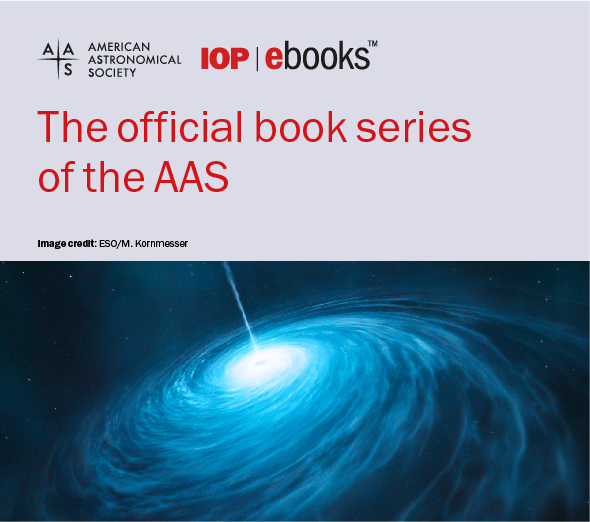Planetary Science Journal Publishes Its First Articles
23 March 2020
The first articles to be published in the Planetary Science Journal (PSJ) are now online! Launched late last year by the AAS and our Division for Planetary Sciences (DPS), PSJ is an open-access journal devoted to recent developments, discoveries, and theories relevant to the investigation of both our solar system and other planetary systems. PSJ publishes manuscripts reporting significant new observational results, theoretical insights, computational modeling, laboratory experiments, innovations in instrumentation, and field work in the planetary sciences.
PSJ’s Editor is Faith Vilas (Planetary Science Institute). She is supported by three Science Editors: Brian Jackson (Boise State University), Edgard G. Rivera-Valentin (Lunar and Planetary Institute, Universities Space Research Association), and Maria Womack (University of Central Florida).
The first article to appear online is “Editorial: Introducing the Planetary Science Journal” by Vilas, DPS Publications Subcommittee chair Ross Beyer, and AAS Editor in Chief Ethan Vishniac describing the motivation for launching the new journal and the services PSJ will provide to the scientific community. Next are six articles covering a wide range of objects from Mercury to Jupiter and an equally wide range of phenomena from formation of the lunar regolith to the interplanetary transfer of material from asteroids to Earth:
Modeling the Formation of the Lunar Upper Megaregolith Layer
James E. Richardson and Oleg Abramov
Researchers from the Planetary Science Institute examine the “lunar megaregolith” and simulate the formation of the upper layer using the Small Body Cratered Terrain Evolution Model (SBCTEM).
On the Delivery of DART-Ejected Material from Asteroid (65803) Didymos to Earth
Paul Wiegert
The Double Asteroid Redirection Test (DART) spacecraft is planned to deliberately crash into the secondary of the binary asteroid Didymos in 2022 to assess deflection strategies for planetary defense. How much material might be delivered to near-Earth space as a result of such an impact?
The Rapid Imaging Planetary Spectrograph: Observations of Mercury’s Sodium Exosphere in Twilight
Carl A. Schmidt, Jeffrey Baumgardner, Luke Moore, Thomas A. Bida, Ryan Swindle, and Patrick Lierle
Using results from a new instrument for high-cadence spectroscopy, this study shows how to overcome many of the difficulties associated with twilight observations of Mercury’s extremely thin atmosphere.
Asteroid Diameters and Albedos from NEOWISE Reactivation Mission Years 4 and 5
Joseph R. Masiero, A. K. Mainzer, J. M. Bauer, R. M. Cutri, T. Grav, E. Kramer, J. Pittichová, S. Sonnett, and E. L. Wright
The team behind the Near-Earth Object Wide-field Infrared Survey Explorer (NEOWISE) spacecraft looks at recent observations to survey and characterize near-Earth asteroids.
Jupiter-style Jet Stability
Timothy E. Dowling
Studies of Jupiter’s zonal jets — facilitated by the two Voyager flybys, the Galileo entry probe, the Cassini flyby, and the Juno orbiter — have led to two fundamental insights into inviscid shear stability that have implications for a wide range of large-scale fluid systems involving alternating shear.
The Solar Wind Prevents Reaccretion of Debris After Mercury’s Giant Impact
Christopher Spalding and Fred C. Adams
Researchers theorize that the solar wind may play an instrumental role in explaining Mercury’s anomalously large iron core, and then take this a step further to discuss implications for exoplanets.
PSJ joins the Astronomical Journal (AJ), the Astrophysical Journal (ApJ), ApJ Letters (ApJL), and the ApJ Supplement Series (ApJS) as the newest of the AAS’s peer-reviewed research journals. All are produced in partnership with IOP Publishing in the United Kingdom and, in PSJ’s case, with the DPS. PSJ is a “gold open access” journal, meaning all its articles are free for all to read as soon as they’re published. Like the other AAS journals, PSJ features a quick turnaround from receipt through review to online publication. Initially articles are being collected into quarterly issues; as the number of submissions increases, issues may be numbered bimonthly or more frequently.
“I’m really excited to witness the birth of the Planetary Science Journal,” says AAS President Megan Donahue (Michigan State University). “I have no doubt that it will publish a lot of groundbreaking research. Even as AAS President I didn’t get a special preview, so I’m eager to go online and read the first articles.”
To celebrate the launch, PSJ is offering a special discount of half off our regular gold-open-access rates for the first 100 articles published in the journal. Submit your manuscript early to enjoy all the benefits of open access without paying the full article publication charge (APC)!
Originally published at https://aas.org/posts/news/2020/03/planetary-science-journal-publishes-its-first-articles





